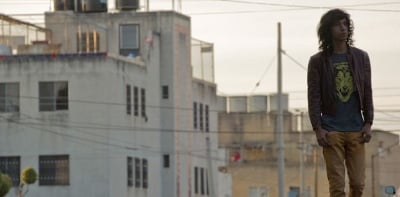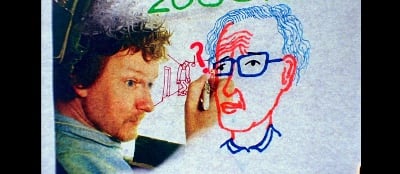LIFF28: Abderrahmane Sissako’s ‘Timbuktu’
December 10, 2014
[Image courtesy of Leedsfilm.com]
Part of 28th Leeds International Film Festival (LIFF28)
5th – 20th November 2014
Abderrahmane Sissako has repeatedly proven himself to be one of Africa’s standout directors. In 2003, his film Heremakono won first place at the 18th FESPACO, and three years later another became the first film ever to win the Film Award of the Council of Europe. His newest work, Timbuktu, is a powerful study of oppression and the human spirit, and has already won two awards earlier this year at Cannes.
Timbuktu centres around people whose lives and cultural traditions are being overthrown by occupying jihadist forces. As these zealots introduce ever more ridiculous rules, such as bans of music, football and smoking, we get to see the small ways in which the locals try to grasp back their freedom.
Sissako’s film follows a large cast of characters, from a local madwoman to a young man forced to record a ‘conversion’ video, whose stories interweave as the plot goes on. The central figure though is Kidane (Ibrahim Ahmed), a man who despite the occupying forces still lives in a traditional tent in the desert with his wife (Toulou Kiki) and their young daughter Toya. During an argument with a local fisherman, Kidane accidentally shoots and kills him, and he and his wife are sentenced to death.
One of the standout features of this film is how well it has been shot. From the desert scrub to the streets of the town, each scene is beautifully composed, and it serves as a testament to the director’s skill that he can capture such variety in a landscape that on the surface might appear empty. One shot in particular, in which Kidane and the man he has just shot stumble away from each other across a wide river, lingers just long enough to be absolutely stunning. This is complemented by the work of the film’s costume designer, who is well deserving of a pay raise. The long, flowing dress of the local madwoman for instance stands out as an amazing wave of life and colour amongst the bleakness of the desert sands.
Visual images have a large role to play in Timbuktu’s presentation of its themes. Some of the symbols used are not quite what one would call subtle; for instance, an early shot shows jihadi forces machine-gunning Malian religious artefacts out in the desert. However, as a way to open a film it is very powerful, and effectively lays the groundwork for what is later to come.
Ultimately though, it is the characters that are most important in the film, and it is in the quiet human interactions between them that Sissako’s message comes through most clearly. One such scene shows a group of young boys miming a game of football, having to pretend that a ball is there as otherwise they risk being stoned to death. In another, a woman openly defies her oppressors by singing even whilst she’s being whipped.
This human warmth is counterbalanced by the shocking brutality that the townspeople endure. In the final act Kidane and his wife are stoned to death, and we get to see the horror of this presented first-hand. It’s a shocking break from the rest of the film, and brings the politics behind Timbuktu right into the foreground.
However, the jihadist forces of Timbuktu are by no means two dimensional villains. Sissako paints all his characters as living people, and we are shown plenty of scenes in which his antagonists are humanised. One, for example, is shown to be infatuated with Kidane’s wife, and after an awkward meeting with her ends up firing into a bush in a storm of impotent rage. By taking the time to do this, he has made all his characters much more believable, and the film is all the more powerful for it.
Adam Button




Comments